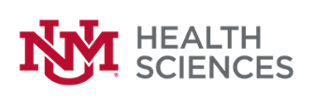Computational Tools for Cheminformatics and Biomolecular Discovery
| app | description | powered by |
|---|---|---|
Badapple2 |
(NEW: beta version of Badapple2, same data but ported to RDKit, validated against “Badapple-classic”, November 2024) Badapple = Bioactivity datamining associative promiscuity pattern learning engine. Badapple: promiscuity patterns from noisy evidence, Yang et al., J. Cheminfo. 8:29 (2016), DOI: 10.1186/s13321-016-0137-3. | RDKit |
Carlsbad |
Bioactivity knowlegebase & hypotheses via chemical patterns. The CARLSBAD Database: A Confederated Database of Chemical Bioactivities, SL Mathias et al., Database, 2013, bat044, DOI: 10.1093/database/bat044. | ChemAxon, Cytoscape |
Convert |
Convert mol formats | ChemAxon |
Depict |
Depict molecules | RDKit |
DGeom |
Distance-geometry conformer generation | RDKit, JSmol |
Drape |
Dose-response app for potency exploration: Visualize dose-response curves with 4-parameter logistic regression plots. | R, R-dr4pl, R-Shiny |
DrugCentral |
Drug knowledge integration database. DrugCentral 2018: an update , Ursu O, et al., Nucleic Acids Research, doi:10.1093/nar/gky963, 29 October 2018. | Django, PostgreSql, ChemAxon |
Exfiles |
Expression profile analytics, with SABV (sex-as-biological-variable), with RNA-seq data from GTEx | R, R-Shiny |
JSME |
JavaScript molecular editor, by P. Ertl & B. Bienfait | peter.ertl.com |
MolCloud |
Molecule clouds (algorithm by P. Ertl & B. Rohde, Novartis) | ChemAxon |
Ro5 |
Lipinski Rule of 5 analysis | ChemAxon, VCCLAB/eADMET |
SmartsFilter |
SMARTS filtering with built in Glaxo, Blake, and Oprea SMARTS sets | ChemAxon |
TIN-X |
TIN-X: Target importance and novelty explorer | Python, ES6, SASS, Linting, MySql, Solr, Docker, etc. |
TIGA |
TIGA: Target Illumination GWAS Analytics. From the NIH IDG Project, aggregated evidence from the NHGRI-EBI GWAS Catalog for gene-trait associations | R, R-Shiny |
Druglikeness |
Druglikeness using DRUGS/ACD fragment analysis | ChemAxon |
repoDB |
Drug repositioning database, developed by Adam Brown and Chirag Patel at Harvard, updated by Jeremy Yang at UNM with new versions of DrugCentral, AACT, and UMLS. | R, R-Shiny |
| Sincere thanks to the software partners and providers whose cooperation and commitment to academic research allow these services to exist: | |||
 ChemAxon |
 CDK |
 RDKit |
|
ALLOWED USE: These applications are for limited, reasonable use by the scientific community and especially academic and non-profit researchers worldwide. Overuse will interfere with access and performance for others, so please be considerate. In general, all users should limit use to 5000 molecules per day. All usage is logged, and overuse may result in client IP blocking. For special requests such as high-volume jobs and collaboration inquiries contact the Translational Informatics Division. Input file sizes: Note that these web apps, given typical network throughput, are impractical for large input files. In most cases the app restricts input file sizes. In general files in excess of a few thousand lines (e.g. SMILES) should not be uploaded. For help contact Jeremy Yang.
